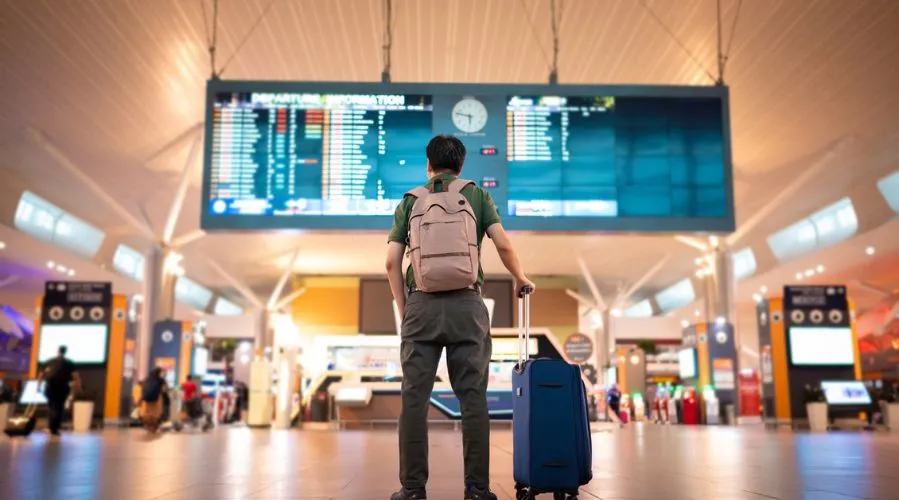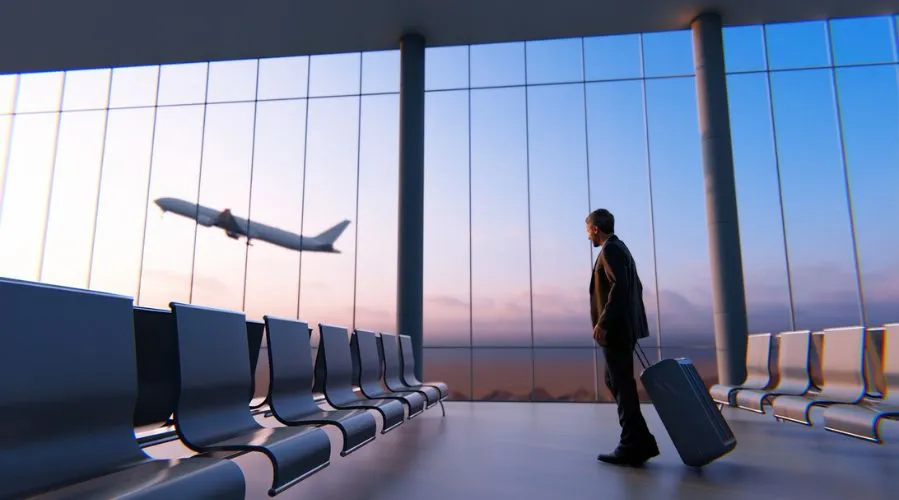Due to its shape on the map, locals sometimes refer to Italy as lo Stivale (or "the Boot"). Lo Stivale also happens to be the fifth most visited country in the world. And — with its breathtaking natural and manmade sites, world-class wine and cuisine, and exquisite culture and history — it’s no wonder Italia is also often referred to as il Bel Paese (or "the Beautiful Country"). It’s home to Rome, Milan, Florence, Naples, and Venice. It’s the birthplace of both Leonardo Da Vinci and pizza. It boasts the most UNESCO World Heritage sites in the world. And it has a free, 24-7 wine fountain (Google it).
And if you’re planning a dream viaggio to il Bel Paese in the near future — AXA’s got everything you need to know to ensure your trip is a safe one.
- What documentation do I need to visit Italy?
- What health risks should I be aware of?
- What COVID restrictions does Italy have?
- General safety and security tips
- Local laws and customs
- Should I get travel insurance when visiting Italy?
- Why choose AXA travel insurance?
What documentation do I need to visit Italy?
At the very least, you’ll need the following:
- A valid passport (issued less than 10 years before and valid for at least 3 months after departure);
- Your itinerary;
- Proof of accommodation;
- Proof of sufficient funds;
- A letter of invitation (if applicable);
- A travel insurance certificate (if applicable; more on that below).
But also keep in mind that Italy is a member state of both the EU and the Schengen Zone. So depending on where you’re coming from, you may need a Schengen visa to enter its borders.
Citizens of countries like China, India, and South Africa, for example, do. Meanwhile, U.K., Canada, and U.S. passport holders won’t need a visa for Italy for stays of up to 90 days. That is, until 2024. As of 2024, to travel to Italy (or anywhere else in Europe), U.S. nationals will need to apply for a visa waiver through the EU’s European Travel Information and Authorisation System (ETIAS).
Not sure whether you need a visa for Italy or not? AXA can help.
Need to apply for a visa for Italy? AXA has your back too. Learn how, from anywhere in the world, here.
Applying from the U.S., the U.K., or India? No worries either. Learn how to get a visa for Italy from India here; how to get a visa for Italy from post-Brexit U.K. here; and from the U.S. — here.
And the Italian Republic’s Ministry of Foreign Affairs and International Cooperation official website (aka Farnesina) has a ton of helpful stuff about entering Italy’s borders legally too.
What health risks in Italy should I be aware of?
The general health concerns affecting the locals mostly have to do with lifestyle. It’s no secret that Italians like to enjoy life. But, unfortunately, excessive indulgence can come at a price. Cardiovascular diseases and cancer (usually caused by dietary habits and alcohol and tobacco consumption), for example, account for about one-third of all Italian deaths. So — if you do as the Romans when in Italy — indulge responsibly.
That said, at 82.7 years, “the Boot” — along with Luxembourg — has the third highest life expectancy in Europe (after Spain’s 83.3 years and Sweden’s 83.1 years). That’s according to euronews.com. And according to statista.com, Italy’s also home to the third oldest population in the world (after Monaco and Japan), with nearly one in four Italians aged 65 years and older.
This longevity is often partially attributed to the way Italians eat — with the Mediterranean diet being considered one of the healthiest in the world.The food is usually fresh, delicious, and — for the most part — super healthy. That’s partially because the country also has some very stringent food regulations. And that goes for most street food too. Foodborne illnesses are, therefore, quite rare.
Tap water is generally considered safe to drink too — in both the major cities and smaller, more remote towns. Moreover, the country is sprinkled with thousands of picturesque water fountains where you can fill up your water bottle on the go.
Do be careful to avoid heat stroke while hiking and/or working on that tan. Stay hydrated (and shade yourself — under a picturesque fountain or, say, a Michelangelo — if need be).
In short, health-wise, you won’t have too much to worry about. You should, however, bring a basic medical kit, double-check your routine vaccines (as per the World Health Organization), and consult with your doctor before traveling. Especially if you have a pre-existing condition and/or are pregnant.
It’s also worth noting that Italy’s National Health Service (SSN) is highly decentralized, with each of its many regions individually in charge of organizing and delivering medical care to the population. For this reason, having travel insurance is an especially good call — but more on that below.
What COVID restrictions does Italy have?
Italy was the first European nation to be impacted by the COVID pandemic. And one of the hardest hit — both economically and in terms of health. As such, there has been an increase in respiratory diseases since 2020, and — unfortunately — a steady increase in COVID cases in the following years too. But while some Italians do continue to sport facemasks in public spaces — as of 2022, all COVID restrictions have been lifted.
The World Health Organization can help you stay informed regarding COVID in Italy too. And if you’re concerned — packing some extra hand sanitizer and facemasks may be a good shout.
General safety and security tips in Italy
In general, Italy is relatively safe and very tourist-friendly. But here are some other things to consider to stay safe during your trip.
- Strikes and demonstrations in Italy
Protests and strikes (or “scioperos”) are not uncommon in Italy. These are usually organized by local unions — in recent years, such as those of transport or telecommunications workers, for example. These demonstrations are generally peaceful, but they can lead to enhanced security presence, disruptions in public services, and so on
So be sure to monitor local media and the internet for the latest happenings. Italy’s Ministry of Infrastructure and Transport frequently updates its website with planned strikes, for example. And, of course, adhere to any and all guidelines set forth by the local authorities.
- Terrorism in Italy
Terrorism remains a threat to most European nations. And Italy — especially being home to the Vatican — is no exception. However, there have fortunately not been any major incidents in recent years. Meanwhile, the Ministry of Foreign Affairs of Italy remains committed to keeping the public safe. — as do its national and regional security and police forces.
- Crime in Italy
Violent crime is uncommon.
However, being a top tourist destination, Italy does have its fair share of pickpocketing, purse-snatching, and theft — especially in “touristy” places like Rome, Venice, and Milan. So be careful in crowded areas and when using public transportation, and don’t leave your belongings unattended.
Scams, credit card and ATM fraud, and cybercrime are also not uncommon. So be wary of who or what you give your personal info to as well.
In short — stay alert, remain diligent, and call the police if you sense something is wrong.
EMERGENCY NUMBERS TO KNOW IN ITALY:
- The universal number for emergencies is #112.
Other useful numbers to jot down are:
- Health emergency: #118.
- Police: #113.
- Fire Brigade: #115.
And it’s always a good call to have a few local contacts handy too — such as friends, colleagues, and/or family.
- Public transportation in Italy
Most major Italian cities have a metro, while most cities and towns will at least have some sort of regular bus service. There’s also a very efficient rail system that can get you from one end of the country to the other in a matter of hours. Traffic in urban areas can be a bit tricky, but — overall — public transport is well-running, with most of the locals relying on it daily. But to ensure you’re not stuck waiting for a mystery bus, double-check your routes and times with the official (and local) public transportation websites of whatever region you happen to be in too.
- Driving in Italy
Having a car in Rome or Florence can be a hassle (due to traffic and limited accessibility). But, generally speaking, driving in Italy is relatively safe and easy. The road network is vast and well-maintained — although more so in the north than in the south. And if you abide by the rules — you should be alright. Italy’s official tourism website can tell you all about said rules.
NOTE: Top tourist destinations in “the Boot” tend to be extra crowded — and, therefore, tricky to maneuver. So scooter, segway, and bike accidents can be a daily sight. In other words — no matter your mode of transportation— be careful.
- Recreational activities in Italy
If your idea of recreation is a nice meal and a glass of wine — then it doesn’t get any better than Italia. However, if you’re a bit more adventurous —Italia has plenty to offer as well. As long as common sense and proper preparation are your best friends.
Italian coastal waters, for instance, can be dangerous. So pay attention to those warning flags at beaches. And be careful when swimming, sailing, surfing, or even walking on the shore — as waves and currents can be strong and unpredictable.
If you’re mountaineering, hiking, or skiing — make sure to consult the local pros, be properly equipped, and know who to contact (and how to contact them) if something does go wrong. Stick to marked trails, roads, and slopes, and don’t go out solo.
Whatever the activity — exercise caution and consult the proper authorities.
There are also plenty of resources online to help you be properly prepared — for example, MeteoMont for avalanche warnings, ITALIA OUTDOORS (for safe hiking, biking, and more), and, again, italia.it — the country’s official tourism website.
- Climate and natural disasters in Italy
Climate change has had a particularly negative effect on “the Boot” in recent years too, unfortunately. And that’s because its unique geography makes it particularly vulnerable to climate disasters. For example, according to The Italian Post (and a 2021 report by ISPRA — the Italian Institute for Environmental Research and Protection), “almost 94% of Italy's municipalities are prone to floods, landslides, coastal erosion, and other natural disasters.”
So, again, the best way to be prepared is to be informed. And if the weather is looking moody — maybe just stay in with that nice glass of Italian wine and some pasta.
What is the safest way to travel in Italy?
While Italy’s public transportation is both reliable and cost-effective, it’s not immune from petty crimes like theft and pickpocketing. Your safest bet is, therefore, probably by car.
Is Italy safe to travel alone as a woman?
Generally speaking, yes. Although some parts of the country are more conservative than others, solo women travelers have little to worry about in the Beautiful Country. Women-on-the-road.com concurs (and offers a few general safety tips), while visititaly.eu even offers 10 perfect destinations for women traveling in Italy alone.
Is it safe in Italy at night?
Again, generally speaking, yes. However, you should obviously take the same precautions as you would anywhere else — i.e., don’t carry large amounts of cash, avoid dark alleyways and deserted areas, and use common sense.
Local laws and customs in Italy
Being home to some of Europe’s finest culture and history, Italy does tend to have a few interesting laws and customs.
For example, you may be fined for littering, eating, drinking, or even sitting in certain public spaces or near certain churches, monuments, and buildings. You’re also not allowed to take photos of official buildings and military areas. And cities like Rome and a few others have banned organized pub and bar crawls.
PRO TIP: Another thing that catches many tourists off guard is the infamous Italian coperto. Roughly translated as ”coverage,” this is a cover charge that restaurants include for servings of bread, oil, vinegar, salt, pepper, other various nibbles before your main meal, and even the forks and knives. Usually around 1–3€ per person (children included), the coperto is a long-standing Italian tradition in many establishments. And, unfortunately, there’s really no way of getting around it. However, you can often see it — albeit not in huge letters — somewhere on the menu (and/or on the menu board outside). Or ask how much the coperto is before sitting down.
The U.S. Department of State has a detailed section about Italian laws and customs that is worth familiarizing yourself with, as does Ireland’s Department of Foreign Affairs.
So do your homework. Brush up on your Grazie, No Grazie, and Mi Scusi. And remember that general rule of thumb — which in this case is quite literal — when in Rome, do as the Romans do. -
Should I get travel insurance when visiting Italy?
Yes. Whether you need a Schengen visa or not, travel insurance is never a bad call — but especially so when it comes to “the Boot.” Because even though the country is beautiful, safe, and one-of-a-kind — between COVID, pickpockets, and climate change — it can also be quite unpredictable. So it’s definitely better to be safe than sorry.
Moreover, medical costs abroad can be pricey. And having the right travel insurance will help ensure you’re well taken care of — and at a reasonable cost — if something does go wrong.
Why choose AXA travel insurance for Italy?
And that’s where AXA comes in. If you do need a Schengen visa for Italy, AXA’s plans meet all the necessary requirements. And if your visa is denied, the plans are refundable in most cases as long as you provide the proper documentation.
AXA plans also cover you not only in Italy but all 27 Schengen territories (and beyond).
Getting an AXA plan is quick, easy, and affordable — they start at as little as €22/week. There are also no age restrictions with AXA’s plans.
And the AXA certificate — which can be downloaded online and printed instantly — is accepted at all Italian (and other Schengen) embassies and consulates.
So if you’re ready to say ciao (it means “hello” too) to Italia, an AXA travel insurance plan is guaranteed to make your journey a buon viaggio indeed.
Related articles:
Are there any COVID restrictions for visiting Italy?
No. As of late 2022 all COVID restrictions for visiting Italy — and the rest of the EU — have been lifted.
Is Italy part of the EU?
Yes. Italy is one of 29 members of the European Union. It’s also a member of the Eurozone (and its currency is - therefore - the Euro).
Is Italy part of the Schengen Zone?
Yes. Italy is one of the 29 Schengen member states as well
Can I extend my Schengen visa when in Italy?
You can under exceptional circumstances, and you can learn more about that here.
Can I work or study in Italy with a tourist visa?
A tourist (or “short-stay”/TypeC) visa allows you to visit Italy for vacation - to see family or for a short business trip. However - it cannot be converted into a work or study permit once you’re there.
AXA already looks after millions of people around the world
With our travel insurance we can take great care of you too
AXA Schengen's Travel Insurances

AXA Schengen Basic
AXA Schengen Basic is perfect to obtain your Schengen visa. This travel insurance meets all the requirements demanded, covers you in all the countries of the Schengen Area as well as 4 European microstates (Andorra, Vatican City, Monaco and San Marino).

AXA Schengen Essential
AXA Essential is perfect to obtain your Schengen visa. It provides coverage in all the Schengen countries + the European microstates + all the EU countries including UK. And you get additional guarantees compared to AXA Schengen Basic.

AXA Schengen Annual
AXA Annual is perfect to obtain your Schengen visa. This annual travel insurance is ideal for those who often travel to Europe as well as multiple-entry Schengen visa holders. You get the same guarantees as AXA Schengen Annual for different countries during 90 days.


